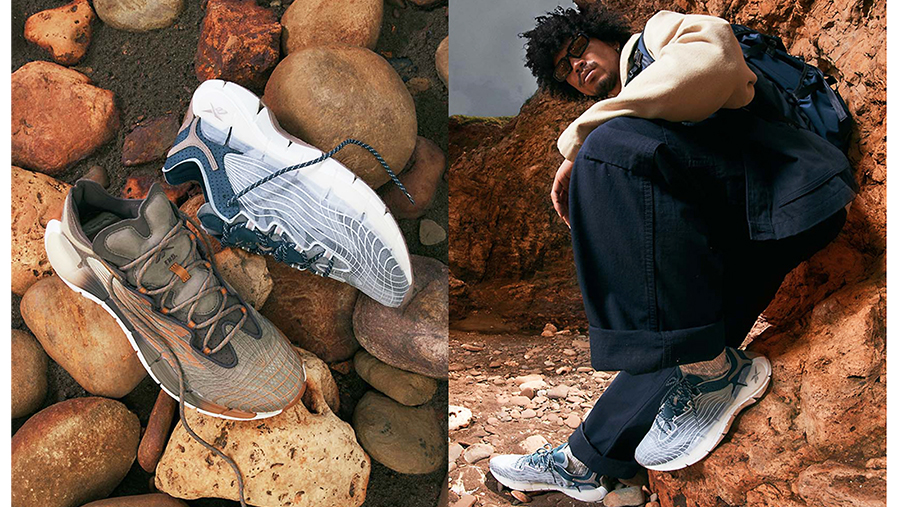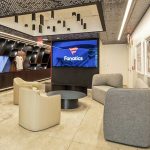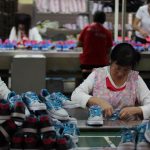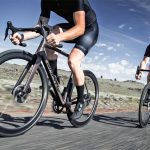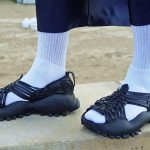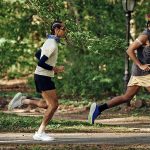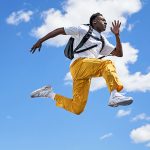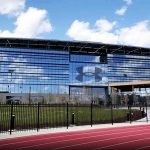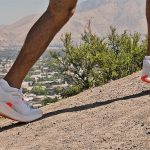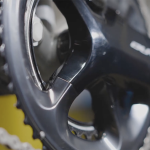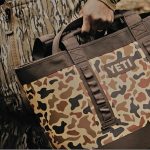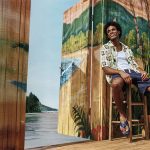Reebok’s sales peaked at $3.2 billion in 2004 and shrunk to $1.4 billion by 2020. However, the brand delivered growth for the majority of its 14 years under Adidas’ ownership, and profitability was its main challenge toward the end.
Sales had slowed before its acquisition, with some of the lost revenue over the last 14 years reflecting challenging trends in the sports licensing space and an exit from all of the brand’s sponsorships with the four major sports leagues. Adidas took over the NBA license in its first year of ownership and the NHL license in 2017.
In 2012, Reebok suffered a significant setback when Nike replaced the brand as the NFL’s on-field uniform provider. The NFL partnership was seen as a primary way for Reebok to differentiate itself in the sports space from the Adidas brand’s positioning in soccer and basketball.
Under Armour took over Reebok’s MLB footwear license in 2011, and Reebok soon exited all team sports categories marked by its star NBA endorser John Wall of the Washington Wizards joining Adidas’ ambassador roster in 2013.
Reebok signed licensing agreements with CrossFit in 2011 and the Spartan Race in 2013 as it refocused on the fitness opportunity that harked back to its initial success in North America. The brand’s heyday dates back to the eighties with the launch of what many saw as the first athletic shoe designed for women, the Freestyle, tied to the Jane Fonda-inspired aerobics craze. However, newer competitors such as Lululemon and Under Armour presented challenges as they flexed into the fitness focus.
On the product side, the one mega-hit since being acquired by Adidas was the EasyTone, but the brand was eventually hit with a massive penalty from the Federal Trade Commission for misleading advertising claims in thr toning category. Several other models sold well, but none like the Freestyle or its prior successes, such as Philadelphia 76ers’ Allen Iverson’s Question model or the brand’s Pump inflatable technology.
While the acquisition was expected to help Adidas compete against Nike in North America, Boston-based Reebok had lost ground in its home market over the last decade. Reebok’s soon-to-be-owner, Authentic Brands Group (ABG), noted that 70 percent of Reebok’s business hailed from outside North America. Currency headwinds translating the U.S. dollar against the euro exacerbated its U.S. decline.
The top-line declines also reflected efforts over the last few years to pull back distribution, including shuttering many of Reebok’s factory outlet stores to drive profitable growth.
The ABG deal is expected to close in the first quarter of 2022.
The following is a roundup of Reebok’s yearly performance as part of the Adidas brand.
»Reebok Brand Segment Delivers €2.47 Billion In Sales In 2006
Adidas acquired Reebok on January 31, 2006, and the Reebok segment, which included Rockport and CCM Hockey, added €2.47 billion in sales to the Adidas Group in 2006. The addition helped Adidas exceed the €10 billion sales mark for the first time in the company’s history.
On a proforma basis, assuming Adidas owned Reebok, over the course of 2005, Reebok segment sales declined 9 percent. On a like-for-like basis, excluding the transfer of the NBA and Liverpool licensed businesses to Adidas, currency-neutral sales for the Reebok segment decreased 6 percent, in line with management’s initial expectations.
In its 2006 Annual Report, CEO Herbert Hainer said, “My vision for Reebok is simple and no different than my vision for our other brands: make the brand desirable, with a clear focus on performance. Reinvigorating the Reebok brand will not be an overnight process, and it will take several seasons before we have the brand firing on all cylinders. There are short-term challenges compounded by difficult conditions in Reebok’s core markets. These, and negative accounting impacts, were why Reebok was not earnings accretive in the first year, despite the underlying profitability of the business. We have told you that we will make investments to address these issues and to provide additional support to strengthen the brand over the coming quarters.”
The first major product initiative under Adidas’ ownership was set for the second half of 2007 focused on running, women’s and apparel. Marketing campaigns were planned to leverage Reebok’s NFL, MLB, Peyton Manning, Thierry Henry, and Scarlett Johansson sponsorships, and a focus was set on extending its distribution points. Said Hainer, “By broadening our presence in all major retail formats, particularly in sporting goods and better department stores, we will reduce the brand’s historic dependence on specific customers and channels to provide a more balanced and flexible distribution base.”
»Reebok Segment Currency-Neutral Sales Flat In 2007
Sales for the Reebok segment reached €2.33 billion in 2007. That represents a decline of 6 percent compared to €2.47 billion in the 11 months in 2016 since Adidas acquired the business. On a like-for-like basis, Reebok segment sales declined 5 percent in 2007. On a currency-neutral basis, sales were flat.
Reebok’s chief marketing officer, Uli Becker, became Reebok’s new CEO, replacing Paul Harrington, who had been with Reebok for nearly 12 years, including the last two years as CEO. At the year’s close, order backlogs for Reebok were down 8 percent, with the decline blamed on reduced orders from mall-based retailers in the U.S. and Canada.
»Reebok Segment Currency-Neutral Sales Decreased 2 Percent In 2008
Currency-neutral sales in the Reebok segment decreased 2 percent in 2008 as growth in the running category was offset by declines in most other categories. Gross margins fell as a result of higher clearance sales at lower margins. Reported sales at the Reebok segment decreased 8 percent to €2.14 billion.
Reebok’s currency-neutral backlogs at the end of 2008 were down 17 percent, impacted in part by lower orders for licensed apparel, particularly in North America. Reebok segment sales were expected to be at least stable in 2009 compared to the prior year on a currency-neutral basis. Hainer said in Adidas’s 2008 Annual Report, “At Reebok, key measures were initiated to revitalize the brand. But 2008 was also a year of major challenges, particularly in light of the global economic and financial crisis.”
»Reebok Brand Currency-Neutral Sales Declined 7 Percent In 2009
Adidas separated Rockport and CCM Hockey from Reebok’s sales for the first time. Reebok brand sales were down 7.2 percent in 2009 on a currency-neutral basis. Reported sales for the brand declined 6.6 percent to €1.6 billion from €1.72 billion.
For the first time since its acquisition, Reebok brand sales in North America rose, climbing 4 percent during the fourth quarter. Marketing investments were planned to support its growth strategy in the toning category in North America.
»Reebok Brand’s Currency-Neutral Sales Expanded 12 Percent In 2010
Reebok’s currency-neutral sales grew 12.2 percent in 2010, led by a 22 percent gain in North America. Reported sales advanced 19.3 percent to €1.91 billion.
Hainer told analysts on the year-end conference call, “EasyTone has been a magnificent hit with global consumers and customers. Supported by exciting campaigns and fitness testimonials such as Helena Christensen and Kelly Brook, we ended the year on the top spot in the toning category. And let me assure you, this category is definitely not a fad. Even more pleasing for Reebok is that we created a second engine for growth in 2010 with the launch of ZigTech. This was driven by our largest ever online pre-launch campaign. And the commercial results have been phenomenal. According to market research, Reebok was among the top three selling footwear brands during the Christmas period in the U.S. The quality of Reebok’s 2010 top-line improvement is also ensuring that profitability is trending right. I am pleased to report a 4 percentage point improvement in gross margin to 35.9 percent for 2010. While we still have a way to go here, with the great product pipeline and the self-confidence that is really firing up Canton today, I believe 2011 will be another bright year for the Reebok brand.”
»Reebok Brand’s Currency-Neutral Sales Expanded 6 Percent In 2011
Reebok’s currency-neutral sales increased 5.8 percent in 2011, rising 4 percent in North America despite declining toning revenues. Reported sales were up 2.5 percent to €1.96 billion.
Hainer told analysts on the year-end conference call, “Over the past two years, we have brought Reebok back on the map with three highly successful commercial product hits: EasyTone, ZigTech and RealFlex. We can be proud of our achievements, as we have grown sales by more than 20 percent and improved the gross margin by over four percentage points since 2009. While the toning market provided rapid growth early in this period, the fact that ZigTech and RealFlex have fully compensated for the equally swift deceleration in the category highlights that Reebok has regained its touch at creating broad-based innovative and highly attractive products. These launches have also helped drive pricing up for the brand, as overall ASP’s increased 5 percent for the year, with double-digit increases in Men’s and Classics, partly offset by declines in Women’s due to reduced pricing in the toning category.”
In September 2011, Reebok agreed to pay $25 million to settle charges it misled consumers with false claims about its EasyTone walking shoes and RunTone running shoes.
»Reebok Brand’s Currency-Neutral Sales Tumbled 18 Percent In 2012
Reebok’s currency-neutral sales fell 17.9 percent in 2012. North America’s sales showed a notable decline as the brand lost the NFL license to Nike.
Reported sales for Reebok were down 14.0 percent to €1.67 billion.
Excluding the impact from the discontinuation of the NFL business and transfer of the NHL-related sales to Reebok-CCM Hockey, currency-neutral sales declined 8 percent. The brand’s gross margin was essentially flat at 35.9 percent despite markdown pressures to clear toning products during the year. Partnerships were formed with CrossFit, Spartan Race and Les Mills as the brand repositioned around fitness.
Hainer told analysts on the year-end conference call, “While we are obviously disappointed with the Reebok results, we have seen the underlying business further stabilized as we accelerate our measures to position Reebok as a fitness brand. In fact, in the fourth quarter, Reebok sales, excluding license revenues, were up 3 percent, driven by 13 percent growth in Classics and almost 40 percent growth in apparel.”
Adidas absorbed a €265 million goodwill impairment pre-tax charge during the year, mainly caused by adjusted growth assumptions for the Reebok brand, especially in North America, Latin America and Brazil, and an increase in the country-specific discount rates as a result of the euro crisis.
»Reebok Brand’s Currency-Neutral Sales Increased 2 Percent In 2013
Reebok returned to growth with a currency-neutral gain of 1.6 percent, in 2013 helped by a 9 percent gain in the fourth quarter. Excluding the NFL license impact that still burdened first-quarter comparisons, currency-neutral sales increased 4 percent for the year. Reported sales were down 4.1 percent in the year to €1.6 billion.
Gross margins improved 4.0 percentage points to 39.7 percent. Hainer told analysts that the margin gap between Adidas and Reebok had reached its narrowest level.
Said Hainer, “We are now in touching distance of our Route 2015 goal to lift Reebok’s margin above 40 percent, and I am confident the gap in margins between the brands will continue to narrow further over time. Why? Because we are on a clear, consistent and sustainable growth path. Growth in 2013 followed that from 2012, coming exactly in those categories that fit perfectly with our positioning for Reebok as the fitness brand, with sales in 2013 increasing 18 percent in fitness training, 37 percent in Classics and more than 300 percent in Studio, albeit from a small base. We also continue to bring our unique FitHub concept to new markets, which is an important long-term strategic investment to drive a common presentation of Reebok around the world. In December, for example, the first Reebok FitHub and CrossFit Box opened in France, located in one of the premier shopping destinations, Avenue de l’Opéra in Paris. This original and innovative concept combines a Reebok retail store and a CrossFit gym.”
»Reebok Brand’s Currency-Neutral Sales Climbed 5 Percent In 2014
Reebok sales on a currency-neutral basis climbed 4.7 percent in 2014. Reebok’s wholesale sales were flat, while retail saw double-digit growth. Reported sales were down 1.3 percent to €1.58 billion.
Hainer told analysts on the year-end call, “The progress at Reebok is clearly visible. At the end of 2014, Reebok recorded its seventh consecutive quarter of growth and ended the year with revenues increasing five percent versus the prior year. The brand’s positioning in fitness is resonating extremely well with consumers around the world, particularly in markets where we are driving our own controlled space agenda. As a result, important markets such as Russia/CIS, South Korea, the U.K., and Spain, to name a few, grew at double-digit rates in 2014. Throughout the year, we made significant progress in deepening Reebok’s connection to the fitness community, hosting spectacular fitness events and grassroots activities around the globe, which helped sharpen our brand proposition as the fitness brand. We continue to see plenty of potential in that business.”
»Reebok Brand’s Currency-Neutral Sales Climbed 6 Percent In 2015
Reebok sales on a currency-neutral basis climbed 4.7 percent in 2015. Double-digit growth in Western Europe, Greater China, Latin America, and EMEA offset declines in North America. Reported sales improved 11.0 percent to €1.75 billion.
Fourth-quarter growth of five percent marked Reebok’s eleventh consecutive quarter of growth.
Hainer told analysts on the year-end call, “Without any doubt, this is proof positive of the successful repositioning of the brand and its rededication towards fitness. Clearly, the brand’s bold shift from team sports to a focus on fitness is well accepted by consumers around the globe, with Reebok’s international business growing at a double-digit rate on average over the last eleven quarters – that is almost three years. At the same time, the brand continues to face challenges in its home market. To reset the brand in North America and deliver sustainable and profitable business growth going forward, we started to streamline Reebok’s distribution footprint in North America during the course of 2015 by reducing the number of factory outlets. And while we will continue to pursue that path going forward, we will also ensure we increase retail visibility by significantly growing the amount of premium controlled space. 2016 will see shop-in-shop solutions expand into 100 Academy shops as well as Footaction, Champs and Lady Foot Locker stores across the entire nation. In addition, by opening showrooms to introduce the new Reebok to local communities and leveraging our relationship with highly influential brand ambassadors through grassroots activities, we will introduce new concepts to better connect with our target consumers in the U.S. I have absolutely no doubt that we will see major progress for the Reebok brand in the U.S. this year, which will result in revenue growth in 2016. And I am convinced that, over time, the Reebok brand will become as successful in the U.S. as it already is in all other parts of the world.”
»Reebok Brand’s Currency-Neutral Sales Climbed 6 Percent In 2016
Reebok sales on a currency-neutral basis climbed 5.7 percent in 2016, reflecting double-digit sales increases in Classics and mid-single-digit growth in the training and running categories. Almost all the growth came outside the U.S. Reported sales improved 1.1 percent to €1.77 billion.
Kasper Rorsted, who succeeded Hainer as CEO in October 2016, introduced the Muscle-Up turnaround plan designed to return Reebok to profitability. The plan included cost-cutting measures and the closing of around 40 Reebok stores in 2017.
Rorsted told analysts on the year-end call, “We do not have a growth issue with Reebok. Clearly, we’d like to grow more on a macro level. Our challenge with Reebok is around profitability, which we are addressing. So we need to ensure that we have the right growth profile, not just a growth profile, and we’re confident that that will come over time. But from a growth standpoint, six percent is an acceptable growth for the position we have with Reebok today.”
Rorsted cautioned that its Muscle-Up turnaround plan would take three to four years.
»Reebok Brand’s Currency-Neutral Sales Climbed 4 Percent In 2017
Reebok sales on a currency-neutral basis climbed 4.4 percent in 2017, driven by double-digit sales increases in Classics and low-single-digit growth in the running category. Reported sales improved 4.1 percent to €1.84 billion.
On Adidas’ year-end call, Rorsted highlighted that the Muscle-Up plan elevated Reebok’s net margin by 400 basis points, the highest margin for Reebok since the acquisition. Growth for the year reflected improvements in most regions that offset a 15 percent decline in North America due to efforts to clean up distribution, including closing 37 stores in the region.
Rorsted noted that Reebok had streamlined marketing efforts while adding new influencers and creators like Victoria Beckham to drive more brand heat. The U.S. was expected to return to growth in 2018 for the first time in many years.
“Overall, a very important first year of four years of the turnaround plan,” Rorsted told analysts. He added, “I do want to caution everybody this is a long-term turnaround, and we are treating it also as a long-term turnaround.”
»Reebok Brand’s Currency-Neutral Sales Declined 3 Percent In 2018
Reebok sales on a currency-neutral basis slid 3.0 percent in 2018 as double-digit sales growth in Classics were offset by a decline in Sport. Reported sales were down 8.5 percent to €1.69 billion.
Reebok brand revenues in North America were flat in the year as growth in the U.S. was offset by declines in Canada. Reebok’s gross margins improved 300 basis points to 43.7 percent, driven by the further implementation of its “design-to-value” approach. The Reebok brand reached its goal of returning to profitability, reflecting a profit uplift of more than €150 million for the brand since the launch of its Muscle-Up plan at the end of 2016.
»Reebok Brand’s Currency-Neutral Sales Gained 2 Percent In 2019
The Reebok brand returned to growth in 2019, with currency-neutral revenues up 1.6 percent versus the prior year. The gains were driven by double-digit growth in its home market of North America. Reported sales were up 3.6 percent to €1.75 billion.
Rorsted told analysts on its year-end call, “We saw strong growth in our North American business, in Emerging Markets and Russia. Classic’s growth was low-single-digits, and Sport recorded a moderate decline. So, overall, Muscle Up is all about establishing a profitable growth scenario, so we continue to drive Reebok towards a more sustainable financial position by the year 2020.”
He added, “The Zig launch was extremely well perceived with strong direct-to-consumer sell-through rates. The brand also keeps leveraging its classic silhouettes like the Club C., and with the logo rebranding in November, we received great feedback from consumers and partners. So, continue to expand and build the Reebok business into a sustainable asset by 2020.”
»Reebok Brand’s Currency-Neutral Sales Declined 16 Percent In 2020
Adidas, later in 2020, announced plans to explore strategic alternatives for Reebok and, in February 2021, launched a formal process to divest the brand. Adidas began reporting Reebok as a discontinued operation. Reebok’s currency-neutral sales in 2020 tumbled 16.1 percent, largely due to the impact of the pandemic. Reported sales were down 19.1 percent to €1.41 billion.
Rorsted said in a statement announcing the sale to ABG, “Reebok has been a valued part of Adidas, and we are grateful for the contributions the brand and the team behind it have made to our company. With this change in ownership, we believe the Reebok brand will be well-positioned for long-term success. As for Adidas, we will continue to focus our efforts on executing our “Own the Game” strategy that will enable us to grow in an attractive industry, gain market share and create sustainable value for all of our stakeholders.”
Photo courtesy END x Reebok, Zig Kinetica II “Jupiter”

